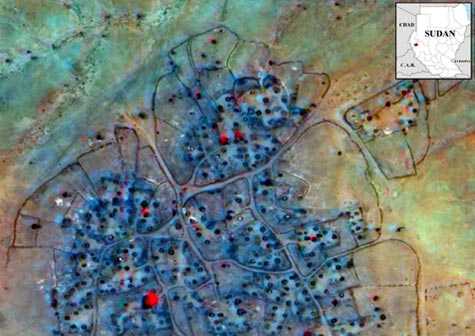Spy Photos

15. Sudan,
2004
Commercial
satellite imagery can identify ethnic cleansing and humanitarian crises when
"cued" (or supplied precise coordinates on where to point a
satellite) by other sources, including humanitarian relief organizations and
NGOs on the ground. Unfortunately,
while convincing to expert eyes, the images alone may not be persuasive enough
to help solve such crises. A glaring case in point is imagery of Darfur
released by the U.S. State Department in 2004 (above) and by humanitarian groups in
2007, which has not succeeded in motivating international organizations to apply
the necessary political pressure and sanctions on the Sudanese government to
end what appears to be genocide. In a
case such as that in Darfur, "ground-truth" imagery, when available
from on-site sources, is often more dramatic and thus more persuasive in making
the case of genocide than blurry images from orbit. In this detail from an image of a destroyed village near Shataya in Darfur taken on June 21, 2004, black rings are foundations of destroyed huts, while red areas indicate remaining healthy vegetation.